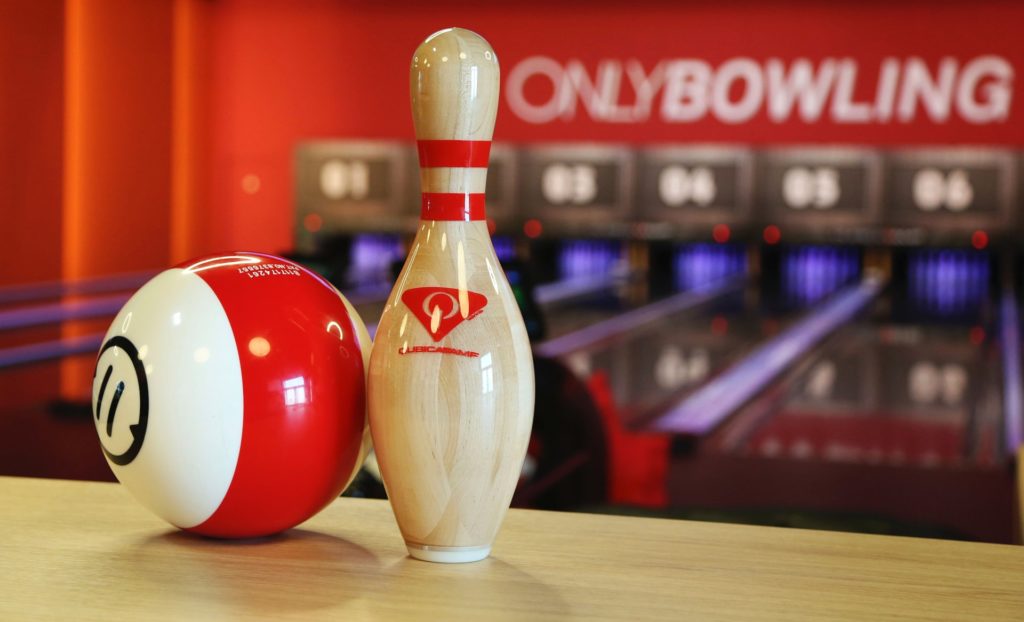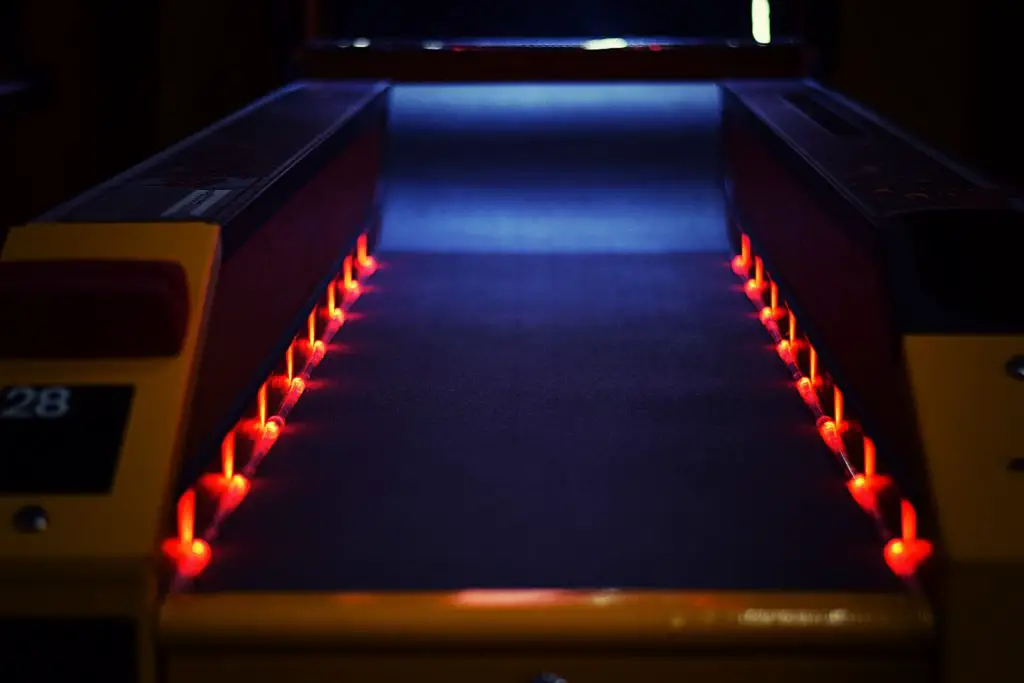Given the success of this post, we’ll rule out Plastic Bowling Balls and compare urethane bowling balls vs reactive resin bowling balls.
Three different coverstocks are used to make bowling balls: Urethane, Plastic, and Reactive Resin Bowling Balls.
The first choice of bowlers at both intermediate and professional levels is the Urethane ball. These two groups are more durable and require regular practice.
Read Also: How To Spin A Bowling Ball?
However, picking the best alternative for your abilities isn’t always simple. Even skilled gamers struggle to make a selection.
We’ll look at the differences between Urethane and Reactive Resin Balls in this article. At the conclusion of this article, you’ll be able to choose which one is ideal for you.
Urethane Bowling Balls
Professionals and regular trainees will appreciate the beauty of a urethane bowling ball. The coverstock is composed of Urethane, which makes it more durable. It has increased and better friction between the surface of the bowling lane and the coverstock as a result of this.
Urethane bowling balls have a lesser deflection rate, which allows them to offer more pin action. Increased friction in Urethane Bowling Balls leads to a smaller deflection rate. This also results in a greater hook potential compared to plastic balls.
To sum it up, Urethane Bowling Balls hold their bounce and perform well in competition. The skill of the bowlers has an impact on their performance. You’ll undoubtedly notice a difference in your game after switching to urethane balls.
Read Also: How To Roll A Bowling Ball
Advantages of Using a Urethane Bowling Ball
Do you want to discover why urethane bowling balls are so popular and beneficial in a variety of bowling situations? Let’s take a look at some of the outstanding advantages that come with using a urethane bowling ball.
Hook Capability
The glossy yet patterned finish on the ball generates friction, which is something to consider when choosing a bowling ball. When the ball strikes the lane, this friction is at full strength.

The added friction that the surface provides allows you to control the ball however you choose. You may maneuver into corners and cracks and curve the ball. Because of the improved hooking ability, this ball is better for strikes.
Controllability
One of the finest features of using urethane bowling balls is their incredible control and balance, regardless of how experienced or novice to the game you are.
This can be well utilized as a hooking tool with its significant hook capability, or you may utilize it straight if that’s what you want to do. You can effectively manage the movement and angling of the ball without making a mistake because of this.
It’s Ideal For Beginners And Professionals.
Urethane bowling balls are advantageous for a range of bowlers because of their controllability and friction. The urethane bowling ball will be perfect for both beginning and expert bowlers, with or without the hooking technique. Whether you’re a novice who doesn’t utilize the hooking approach or a seasoned veteran that wants to strike every time, the urethane bowling ball is ideal for skill holders of all levels.
Better Pin Action
The friction between the lane and the ball is high, resulting in minimal deflection for urethane bowling balls. This helps pins knock each other out rather than getting knocked into one corner. Pin action is when a player knocks pins down rapidly. To knock more pins, take fewer turns. Pin action is crucial for scoring strikes.
Reactive Resin Bowling
Resin balls are different from urethane bowling balls because they have additional criteria. Players who are searching for more hook potential in their game may prefer Reactive Bowling Balls, even if they are not all professional bowlers. The bowling balls’ precision pin action is gradually influenced by a higher hook potential.
If you know what you’re doing, bowling balls with more hooks can be a game-changer. The amount of hook potential on a bowling ball is referred to as greater hook potential. Bowlers with reactive resin bodies are well-known for their hooking and power.
Read Also: Do Bowling Balls Have Serial Numbers? (What Does It Indicate?)
On the other hand, Reactive Resin balls are more expensive and less durable than standard resin balls. Because they are less robust and heavier than normal resin balls, they have a higher hook potential. This is why only a few bowlers can handle reactive resin balls well.
Urethane Bowling Balls Vs Reactive Resin

Even though we’ve previously covered most of the distinctions on urethane bowling balls vs reactive resin in our separate sections above, there are a few more. Let’s look at some of the key differences.
- Urethane bowling balls are more long-lasting than reactive resin balls.
- Urethane balls are long-lasting and consistent, whereas reactive resin balls are suited for players with certain demands.
- The Reactive Resin Bowling Balls are somewhat heavier than Urethane Bowling Balls. The higher hook potential in reactive resin balls causes their weight to increase. The same is true for any ball with a higher hook potential, whether it’s reactive resin or not.
- The beads in Reactive Resin Balls form a more solid bond with the hook, resulting in a greater probability of high-performance hooks.
- In addition, Resin Bowling Balls have a higher friction and pin action than Urethane Balls.
- Urethane balls offer more flexibility and control than reactive resin balls. Before being properly maneuvered, reactive resin balls need some practice.
- The resin balls don’t deflect that readily. To keep a consistent speed and control of the lane, players must practice for months.
- The difference is that reactive resin bowling balls have greater friction. They are more sensitive to the state of the lane. Any little variation in the lane may significantly influence the outcome.
- Gorilla Reactive Resin Balls have greater tensile strength. As a result, they are more expensive than Urethane Bowling Balls. The Reactive Resin Ball is not the greatest choice for novices.
Read Also: Why Do Bowling Balls Have a Fragrance? – Does it Affect the Performance?
Frequently Asked Questions
When Should You Use A Urethane Ball: Urethane Bowling Balls Vs Reactive Resin?
Polyurethane is one of the most durable and popular coverstock materials used in the balls used in bowling. Constructed from polyurethane, Urethane bowling balls have a frictional quality when in touch with the lane surface. This makes Urethane bowling balls ideal for hooking and splitting.
What Is The Ideal Material For A Bowling Ball?
Reactive balls are made from a sticky resin and are the most frequently used bowling balls today. Reactive balls are not quite as long-lasting as plastic or urethane balls, but they do provide players with more friction, pin action when thrown and hooking potential.
How Do I Choose A Bowling Ball?
According to other authorities, the proportion should be 10 percent of your body weight, with a maximum of 16 pounds. The most frequent pro bowlers use 16-pound balls, however many more use 15-pound ones. Another approach is to increase the weight of your regular house ball by one or two pounds.
Urethane Bowling Balls Vs Reactive Resin: Which Is Better?
Reactive resin balls are somewhat heavier than Urethane Bowling Balls. Reactive resin balls acquire more weight as a result of the higher hook potential. This also applies to any ball with a greater hook potential. The reactive resin balls have a greater hook potential and a faster high-performance rate.
What Bowling Ball Do You Think Is The Most Powerful?
The Hammer Scandal ball is covered in carbon-fiber-injected cover stock. It also makes it one of the most durable aggressive bowling balls available today. It’s also a treasure when it comes to energy retention down the lane.
Final Thoughts On Urethane Bowling Balls Vs Reactive Resin
There is no huge difference between the performance of Reactive Resin and Urethane bowling balls. Urethane is a more expensive material than reactive resin, but it has the advantage of being able to withstand impacts better.
Because of this, the choice between urethane bowling balls and reactive resin is dependent on the bowler’s needs.





